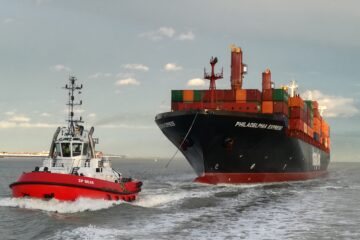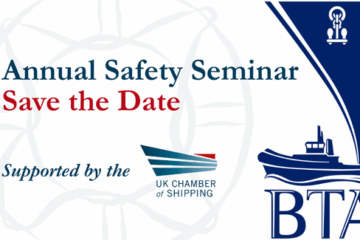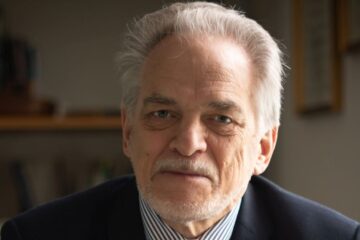Following the annual BTA Conference, Edwin Lampert from Riviera Maritime wrote an article on the presentation by Dr Phil Thompson of BMT on ‘bringing out the best in people using the synthetic tug master and pilot training environment’. The BTA extends its gratitude to the speakers and Edwin for their expertise and professionalism, which contributed to the success of the conference.

Tracing the evolution of tug simulator technology, BMT director Dr Phil Thompson told delegates at this year’s British Tugowners Association Annual Conference, “Simulators are only half the equation. How you use them and approach training will determine whether you get the best results from them.”
On the technical front, BMT has developed a suite of advanced modelling and simulation tools to support high-fidelity operator training. These include the Rembrandt product for numerical analysis of coastal and estuarine hydrodynamics, CFD modelling and physical model testing of complex tug-tow arrangements in restricted channels, and the newly launched Rembrandt 5 Dynamic Multi-Degree of Freedom Class A simulators featuring immersive 360° visuals.
“The technology is impressive,” said Dr Thompson, “but the ability to literally step out of one simulator and into another to observe what someone else is doing is extremely valuable for building shared situational awareness among pilots, tug masters and crew.”
But while high simulator fidelity is necessary for effective training, it is not sufficient, agreed his co-presenter from BMT, Jim Price. “Experience alone does not guarantee learning,” he noted. “We don’t automatically learn from our experiences.” The key is combining experience with reflection and using simulation “as a tool for reflection, to consider what you disliked about what happened and what you would do differently next time.” Used properly, simulation provides invaluable opportunities to learn from mistakes in a safe, controlled environment.
The ultimate goal is ‘fluency’. This is the ability to effortlessly translate perceptions and decisions into correct actions without conscious thought. Elite athletes achieve this routinely. “In an interview, Roger Federer was once asked how he made an amazing shot during a match where he ran across the entire court, stretched his arm to the limit, and chipped the ball exactly where he wanted it to go,” said Mr Price. “Federer answered, ’I just practice my serves and my returns’. In other words, he practiced the fundamental skills, repeatedly, until they become second nature, freeing up cognitive bandwidth to improvise creative solutions in the moment. Through simulation, you can get your tug crews and personnel to that level,” said Mr Price. “Then, when challenging situations arise, like render alarms going off or other issues on the boat that require quick decisions, they have the capacity to handle it because they developed fluency in a simulated environment.”
To this end Mr Price cited a “one to five” rule of thumb, “For every one day in a simulator, you should have five days at sea.”
Of course, even the best simulator training is of limited value if the on-the-job environment doesn’t support the application of those skills. Pointing to a photo of a painter perched precariously atop a stack of buckets, Mr Price noted that unsafe practices often persist because “we fail to understand a person’s working environment and why it’s easier and more convenient for them to perch precariously rather than to do what they were trained to do.” As an employer, “not only do you have the responsibility to send them to a good training course, but you must also provide an environment that encourages them to apply the skills they were taught.”
The article can be found on Riviera’s website here – Riviera – News Content Hub – Simulation is not a silver bullet, but it can be transformative (rivieramm.com)
With gratitude to Edwin Lampert and Riviera for granting permission to the BTA to publish the article.


